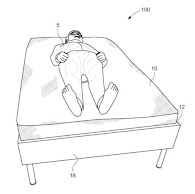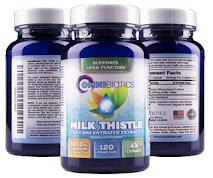The Board reversed a Section 2(d) refusal of ASCENT FEDERAL CREDIT UNION for "Credit union services, namely, providing checking and savings accounts, mortgage lending, savings and loan services, bill payment, financing, ATM banking services, individual retirement accounts, payroll tax debiting services, and electronic banking via the global computer network, excluding providing lease financing for private student loans" [FEDERAL CREDIT UNION disclaimed], finding confusion not likely with the registered mark ASCENT (Stylized) for "providing lease financing for private student loans." Applicant Weber State successfully relied on third-party use and registration evidence in arguing that ASCENT is a weak source indicator in the field of banking and financial services. In re Weber State Federal Credit Union, Serial No. 88675314 (September 14, 2021) [not precedential] (Opinion by Judge Robert H. Coggins).

The Services: Because the services recited in the registration are ambiguous (leasing?), the Board looked to extrinsic evidence regarding the services. Registrant's website indicated that registrant, in effect, offers student loans.
The Board then concluded that the involved services are related. "Indeed, but for the exclusionary language in Applicant’s identification of services, Applicant's broadly worded 'loan' and 'financing' services would necessarily include the student loans which Registrant offers." Moreover, third-party website and registration evidence demonstrated that credit unions offer student loans.
Weber State argued that the Examining Attorney ignored the exclusion of "lease financing of student loan services" from its recitation of services. The Board observed, however, that consumers are unaware of this limitation in the application and it is "not controlling of public perception."
Applicant further contended that its consumers exercise a high degree of care in their purchasing decisions, but there was no supporting evidence. Moreover, credit union members are part of the general population. "Even assuming that current or prospective students seeking to borrow money for school would exercise caution in obtaining student loans, there is no evidence that checking or savings account holders, i.e., Applicant’s customers, are particularly discriminating."
And so, the Board concluded that "the services are related, travel in the same channels of trade, and are offered to the same customers who exercise only ordinary care."
Strength of the Cited Mark: In support of its argument that ASCENT is a weak mark, applicant relied on 15 examples of third-party internet use of marks containing ASCENT to advertise banking and financial services on the internet, as well as on 12 use-based third-party registrations for marks that include the word ASCENT for various financial services in Class 36.
The Board found that the services "offered and registered by third parties under ASCENT-formative marks are similar to Registrant’s student loan services so that we may consider those third-party marks under the fifth and sixth DuPont factors." It concluded that the evidence "establishes that ASCENT-formative marks are both conceptually and commercially weak and, therefore, are entitled to a narrow scope of protection."
Moreover, as to conceptual strength, the use of ASCENT by different financial service providers "indicates that ASCENT in this context suggests increasing, raising, or advancing one’s financial goals."
This is reinforced by the multiple mountain-related ASCENT logo marks which also suggest climbing toward one’s goals. The dictionary definition of “ascent” further supports the concept of rising, mounting, or advancing wealth. Thus, we find that ASCENT-formative marks have conceptual weakness in association with financial services.
As to commercial strength, the evidence was "powerful" that "consumers encountering marks in the financial field have become conditioned to distinguish marks incorporating ASCENT-formative terms based on minute differences including the addition of descriptive and generic terms such as 'financial advisors,' 'financial network,' 'financial management,' 'financial strategy,' 'processing,' etc."
The Board concluded that the cited mark falls on the lower end of the spectrum from very strong to very weak, and that "minute differences between ASCENT-formative marks used in association with financial services are sufficient to distinguish them."
The Marks: Finally, as to the marks, although both contain the word ASCENT, the Board found that, in light of the evidence of record, the additional wording FEDERAL CREDIT UNION. "which designates Applicant’s entity," would enable consumers to distinguish the marks based on that difference.
Conclusion: "The ubiquity of ASCENT in the financial industry and the additional wording present in Applicant’s mark outweigh the similarities between the services, trade channels, and consumers." And so, the Board reversed the refusal to register.
Read comments and post your comment here.
TTABlogger comment: Should ASCENT have been registered in the first place?
Text Copyright John L. Welch 2021.








































